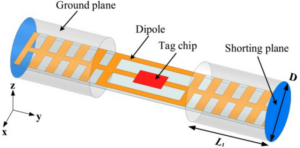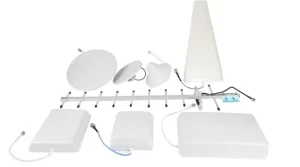1. Coaxial Adapter 35WR Series RF range
The Double-Ridged Waveguide to Coaxial Adapter 35WR Series is designed to operate within a wide radio frequency range, making coaxial adapter suitable for a variety of RF applications. This series typically covers frequencies from 1 GHz to 18 GHz, making it a versatile choice for engineers working with RF signals in this frequency spectrum. This expansive frequency range ensures compatibility with a range of devices and systems, enhancing its utility in various scenarios.
2. Interference Type
Interference in RF systems can take many forms, including electromagnetic interference (EMI) and radio frequency interference (RFI). These types of interference can disrupt the proper functioning of RF equipment and degrade signal quality. The 35WR Series of adapters are specially engineered to mitigate EMI and RFI, providing a clean and stable signal path. Their design minimizes unwanted electromagnetic emissions and susceptibility to external interference, helping to maintain signal integrity.

3. Coaxial Adapter 35WR Series Solution
The Double-Ridged Waveguide to Coaxial Adapter 35WR Series serves as a valuable solution for RF engineers and technicians dealing with interference-related issues. By acting as an interface between waveguide and coaxial cable, this adapter ensures a seamless transition of signals while minimizing signal loss and interference. Coaxial adapter robust construction and precise engineering make it a reliable choice for enhancing RF connectivity in various applications, including telecommunications, radar systems, and satellite communication.
4. Standing Wave Ratio (SWR)
The standing wave ratio (SWR) critical parameter in RF systems, indicating the efficiency of power transfer between components. A high SWR can result in power reflections, leading to signal degradation and reduced system performance. The 35WR Series of adapters are designed to maintain low SWR values, typically around 1.1 to 1.3, ensuring minimal power reflections and maximizing power transfer efficiency. This low SWR characteristic contributes to the adapter’s ability to maintain signal quality in RF applications.
5. Loss
Signal loss common concern in RF systems, and minimizing coaxial adapter crucial for maintaining signal strength and quality. The 35WR Series of adapters are engineered to minimize signal loss by using high-quality materials and precision manufacturing techniques. These adapters typically exhibit low insertion loss values, often below 0.1 dB, ensuring that the majority of the signal power is transferred between the waveguide and coaxial cable without significant attenuation.
Conclusion
The Double-Ridged Waveguide to Coaxial Adapter 35WR Series versatile and effective solution for addressing interference, standing wave ratio, and signal loss challenges in RF applications. With coaxial adapter wide radio frequency range, interference mitigation capabilities, low SWR values, and minimal signal loss, this series of adapters empowers engineers and technicians to enhance the performance and reliability of their RF systems. Whether you’re working on telecommunications, radar systems, or satellite communication, the 35WR Series can play a vital role in optimizing your RF connectivity.







